Where would we be, culinarily, without the mint family? This gregarious and generous tribe of plants gives us such kitchen stars as thyme, lemon balm, oregano, and of course, the many piquant mints.
Vying for prestige as best of the family, however, is probably the large-leaved and aromatic basil. Sweet, spicy, attractive, a pollinator-magnet, a companion plant, and a versatile flavor in food and drink, basil’s role in the garden and kitchen is wonderfully varied.
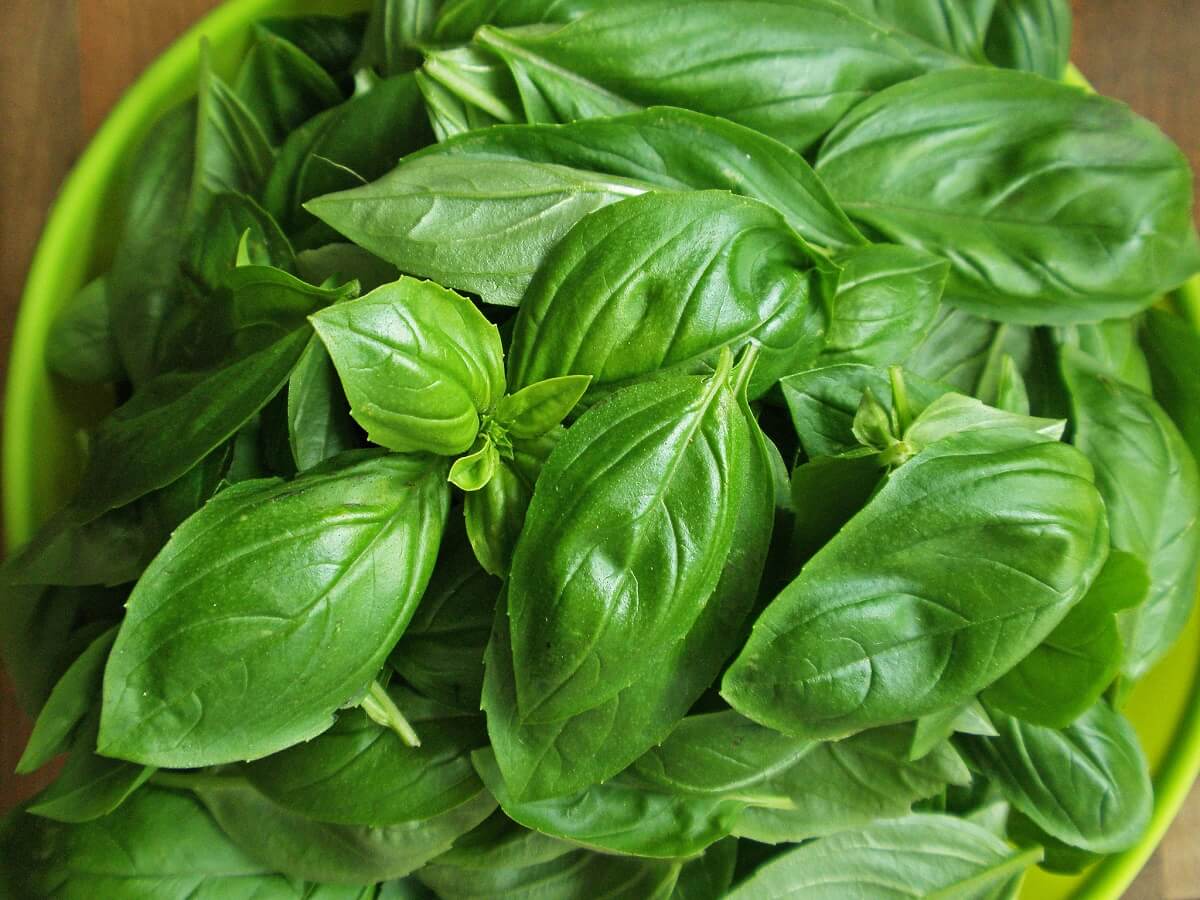
Basil aficionados will be quick to tell you that the grayish, dried stuff you buy for cheap at the store is little more than sawdust compared to the volatile, oil-rich handful of leaves straight from the garden. And if you too have experience growing and harvesting basil, you will quickly become a rightful snob and ruin your taste for anything other than the “real stuff.”
So let’s talk about one of the jewels of going out to the garden — the basil harvest. As much as I enjoy picking peas, pulling radishes, snipping lettuce, digging up garlic, or shucking corn, nothing matches the heady perfume of a newly plucked basil leaf.
Harvesting Basil
Harvesting basil is as simple as going out to your basil patch and grabbing some leaves whenever you need them. You don’t need any special equipment. Just pinch them off at the stem and breathe in the intoxicating aroma of sun-warmed, fresh basil.
The absolute best time for harvesting basil is in the morning before the sun has driven some of the moisture away from the leaves, but you don’t have to fret if some late afternoon-plucked basil is on the menu.
Related Post: 12 Delicious Types Of Basil To Grow In Your Garden
If you want to harvest your basil at the next level, however, you can prune it thoughtfully at the growing nodes to encourage even more leafy growth. As with pruning big trees above the branch collar, cutting at the right place can take advantage of basil’s inherent design to keep it growing more leaves. This helpful guide will give you more specifics on how to prune for leafy regrowth.
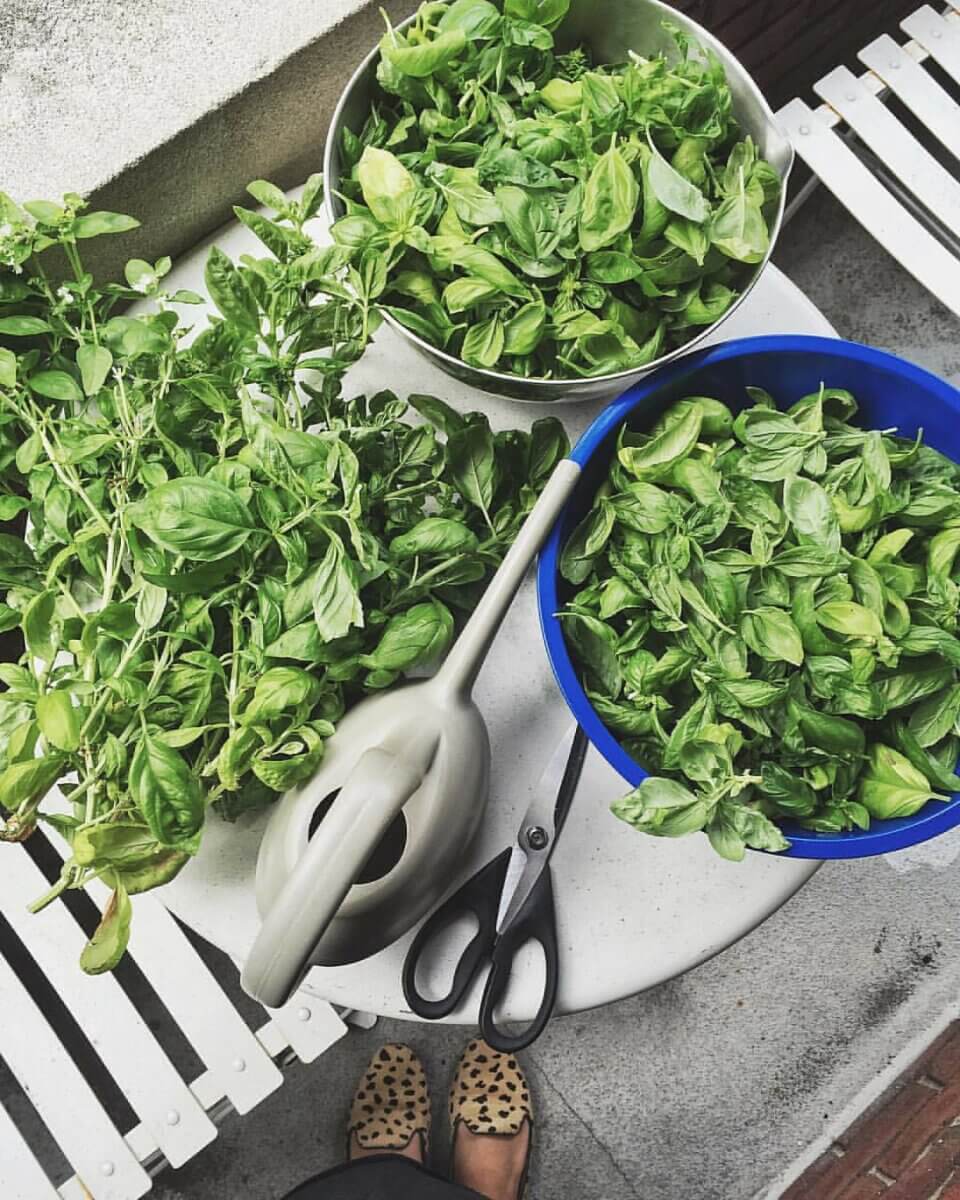
Probably the next best thing to remember when harvesting basil is to leave enough to keep growing for next week’s harvest. Try not to pluck any more than a third of any single plant.
Another important thing to remember is that Basil is a tropical plant. This warm-weather origin means that basil doesn’t tolerate even a suggestion of frost. If you see the mercury threatening a dangerous drop, it would be better to harvest it all prematurely than go out the first cold morning and see your lost harvest hanging black and limp.
Storing Fresh Basil
My favorite way to store a quantity of fresh-harvested basil is to treat it like cut flowers. Keep the harvested branches intact and plunk them in a jar of water.
Store it on the counter, though. Cold temperatures (even refrigerators) often spell basil doom. If you want to make them last up to a week, cover them with a plastic bag — though it’s hardly centerpiece material when it looks like that.
Preserving Basil
All summer long, I see little point in trying to use dried basil if there’s fresh waiting in the garden. A 5-minute trip to the backyard yields the most flavorful leaf, and if added to food at the last moment after being julienned, it will impart the most potent punch of flavor.
But those sunny summer days do reach an end eventually, and in the cold of fall and winter, it’s really nice to be able to use your herbal harvest beyond its fresh state. Here are some ideas for how to store basil once the days of fresh-plucked leaves have passed.
Freezing
Anyone who has picked a handful of basil leaves and accidentally stored them too far in the back of the refrigerator, knows that exposure to near-freezing temperatures turns basil leaves black and limp. You can save leaves, however, by spreading fresh-plucked leaves on a cookie sheet and allowing them to intentionally freeze.
Instead of turning into a soggy, dark slime, they’ll freeze into fresh-looking leaves. Once solid, store them in a freezer bag with the air pressed out. You can also take a lazier approach and just freeze fresh leaves straight in the bag in the first place — the only compromise being you’ll have to hack odd chunks of leaf material when it’s time to cook, rather than having nicely-separated leaves.
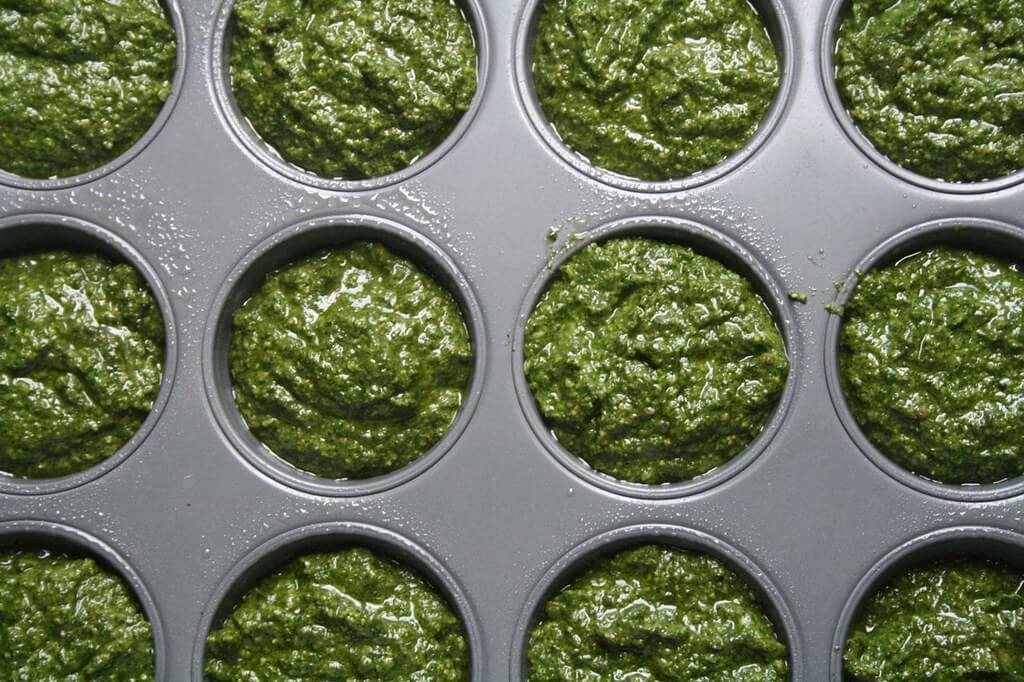
If you want to preserve the brightest green color possible, VERY briefly blanch the leaves before freezing them on the tray. The difference is only an aesthetic thing, however, as this helpful blogger discovered.
Related Post: Growing Basil
Basil can also do really well when frozen in pesto form. I routinely make a large amount of my late-harvested basil into olive oil-rich pesto. Spooned into an ice cube tray and topped with a sealing drizzle of oil, you can pop out the flavorful frozen cubes and store them in a freezer bag until it’s time to shine on some bruschetta or gnocchi.
Dehydrating
Even though I didn’t write well of store-bought basil earlier in this article, homegrown and home-dried basil are a different story. Though dehydrated leaves do lose some of their oils and aromatics when dried, there’s certainly enough left over to make it worth the trouble. When dehydrating, be sure to remove leaves from their juicy stems before starting the process. The leaves will dry far faster that way.
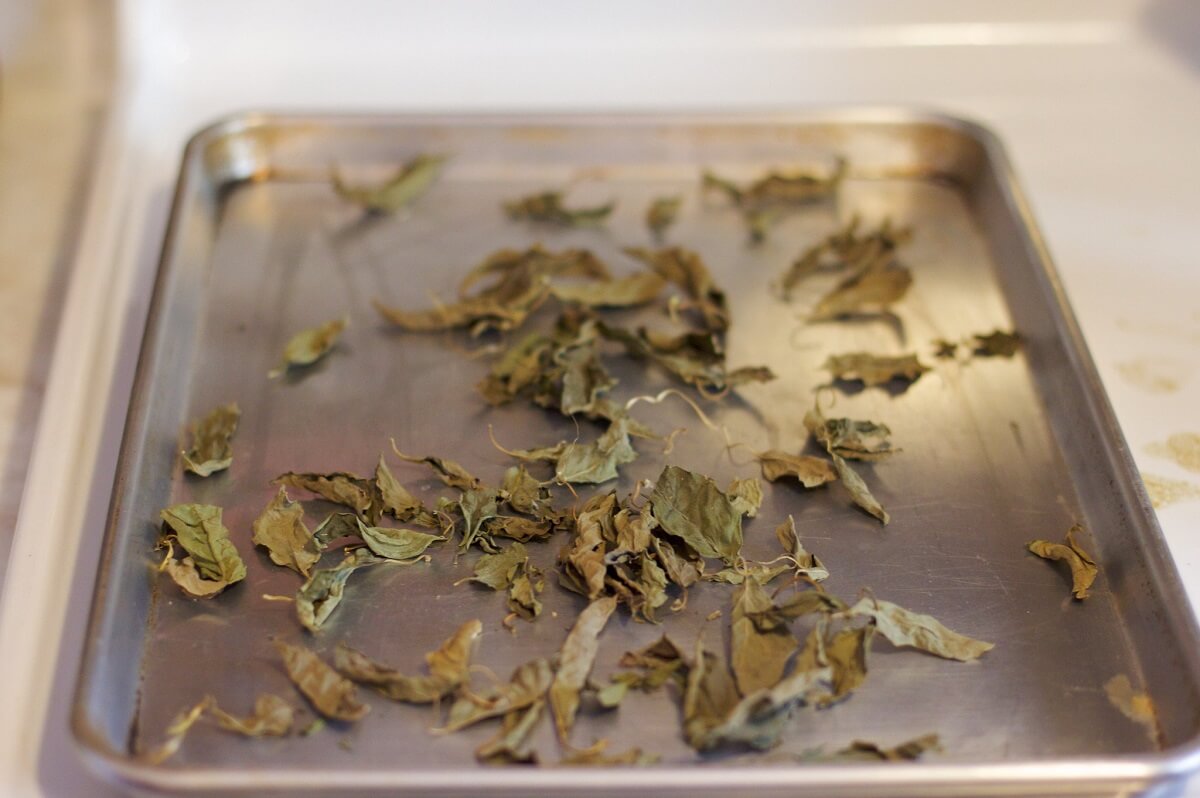
You don’t even need a dehydrator. Simply spread single leaves on a tray and put it in a shaded, warm, dry area for 4 to 7 days. The leaves should be as crunchy and dry as possible before putting in airtight storage. An oven at its lowest setting can dry the leaves in about 2 to 4 hours if you’re in a hurry.
Saving Basil Seeds
Though conventional advice may tell you to pinch off the entire stalk of basil once it starts to bolt, I offer a counter to that. While harvesting basil one last time before it tries to flower will, indeed, give you a nice bulk of this aromatic herb to play with and harvest, cast your eye a little further.
If you’re only growing one type of basil, or if your different cultivars are separated by at least 150 feet (basil is insect-pollinated), let at least a few branches of your best plants go completely to seed.
Like the other types of mint with shared genetics, harvesting basil seeds is incredibly easy. All you have to do is wait and watch. Once the seed stalks start to brown and dry, you can gather the tiny, jet-black seeds by merely shaking them loose. With no threshing, fermenting, or drying, you’ll have all you need to replant for next year.
Do you have any methods for saving basil that I haven’t listed here? What about harvesting basil? Share in the comments below!



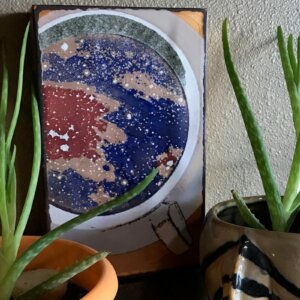
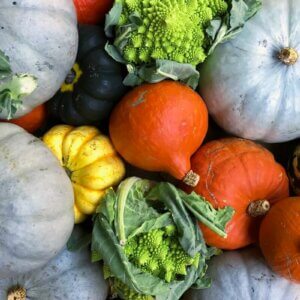
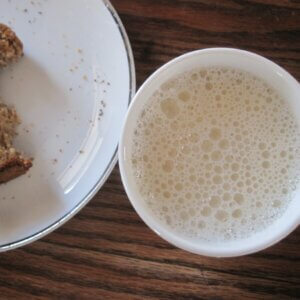


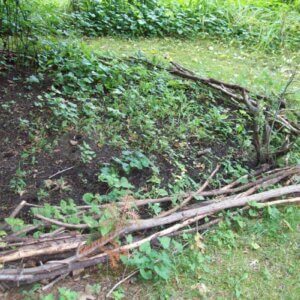

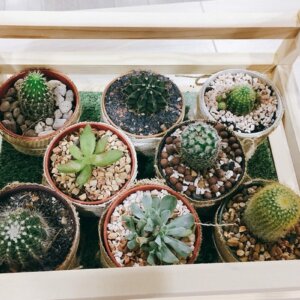




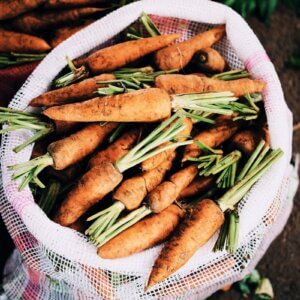




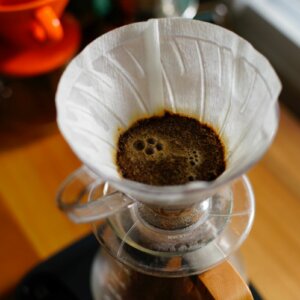



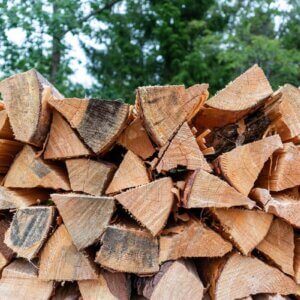
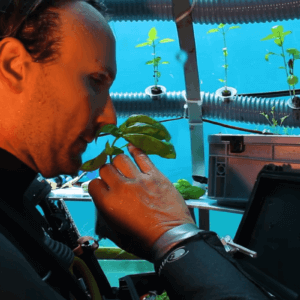




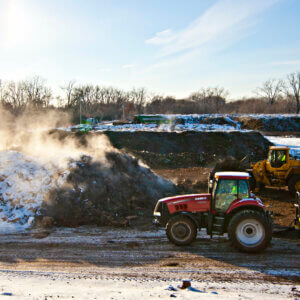

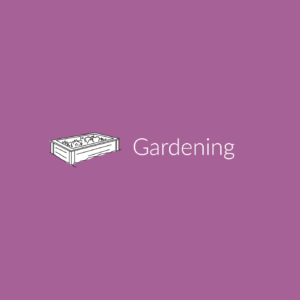


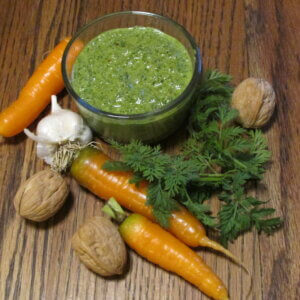




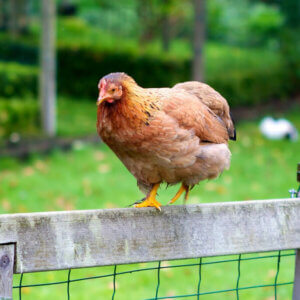

Leave a Reply